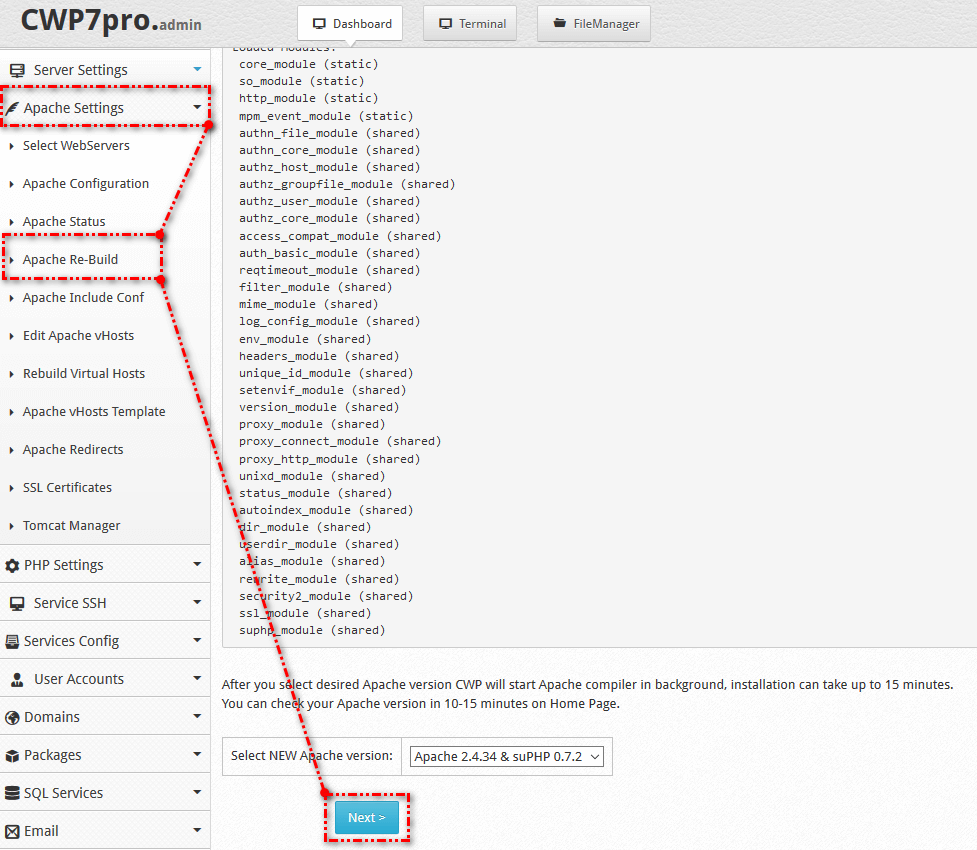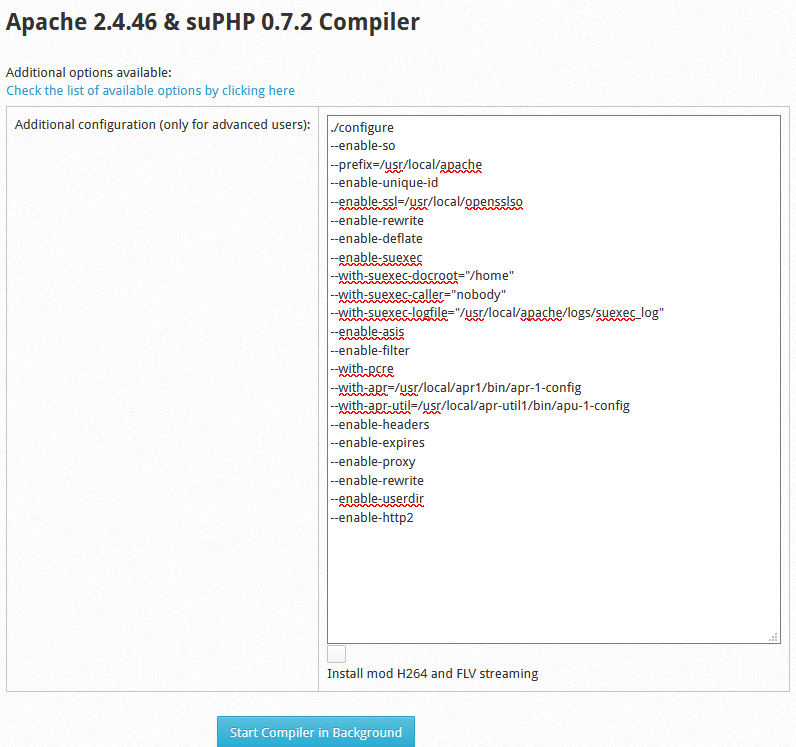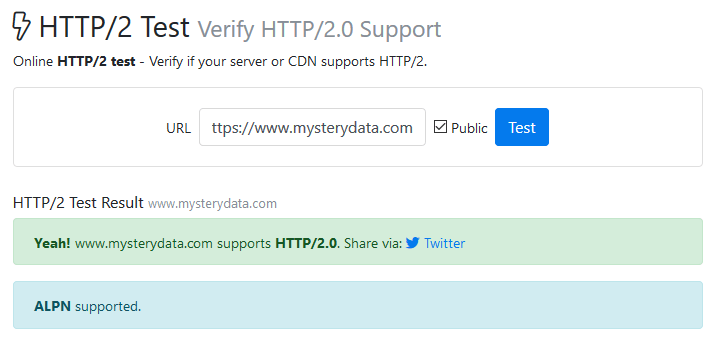How to Enable HTTP/2 for Apache in CWP with mod_http2 module
In this tutorial We’ll install Apache 2.4 and enable HTTP/2 Support in CWP. HTTP/2 will make our applications faster, simpler, and more robust — a rare combination — by allowing us to undo many of the HTTP/1.1 workarounds previously done within our applications and address these concerns within the transport layer itself. Even better, it also opens up a number of entirely new opportunities to optimize our applications and improve performance!
How to Enable HTTP/2 on CWP7 NGINX
The primary goals for HTTP/2 are to reduce latency by enabling full request and response multiplexing, minimize protocol overhead via efficient compression of HTTP header fields, and add support for request prioritization and server push. To implement these requirements, there is a large supporting cast of other protocol enhancements, such as new flow control, error handling, and upgrade mechanisms, but these are the most important features that every web developer should understand and leverage in their applications.
This tutorial is now old to enable http/2 and TLS1.3 go to New tutorial :
It is recommended to upgrade to CWP7/Centos 7 since cwp6/centos 6 is getting old.
Ensure you already have SSL certs/LE certs installed for your domains HTTP2 will only work with HTTPS
Please note it will not work on openvz 6
let’s get started
Ensure you’ve root access and ssh access in order to install/upgrade this packages :-
Upgrading OS to latest version :
yum clean all yum -y update
Upgrading Autoconf :
cd /usr/local/src rm -rf autoconf-* wget https://ftp.gnu.org/gnu/autoconf/autoconf-latest.tar.gz tar zxvf autoconf-latest.tar.gz cd autoconf-*/ ./configure --prefix=/usr make && make install
Installing openssl :
cd /usr/local/src rm -rf openssl* wget https://www.openssl.org/source/openssl-1.1.1l.tar.gz tar zxvf openssl-1.1.1l.tar.gz cd openssl-1.1.1l ./config --prefix=/usr/local/opensslso --openssldir=/usr/local/opensslso zlib shared make && make install
*Building openssl will take some time
Installing Nghttp2 :
nghttp2 is an implementation of HTTP/2
cd /usr/local/src rm -rf nghttp2-* yum install libtool -y wget https://github.com/nghttp2/nghttp2/releases/download/v1.42.0/nghttp2-1.42.0.tar.gz tar zxvf nghttp2-1.42.0.tar.gz cd nghttp2-*/ ./configure --prefix=/usr make && make install
Install APR:
cd /usr/local/src rm -rf apr* wget https://archive.apache.org/dist/apr/apr-1.6.5.tar.gz wget https://archive.apache.org/dist/apr/apr-util-1.6.1.tar.gz tar -xf apr-1.6.5.tar.gz tar -xf apr-util-1.6.1.tar.gz cd /usr/local/src/apr-1.6.5 ./configure --prefix=/usr/local/apr1 make make install cd /usr/local/src/apr-util-1.6.1 ./configure --with-apr=/usr/local/apr1 --prefix=/usr/local/apr-util1 make make install
Rebuilding Apache with http2 support from CWP GUI :
First backup the httpd.conf
cp /usr/local/apache/conf/httpd.conf /usr/local/apache/conf/httpd.conf.bak
Goto Apache Settings >> Apache Re-Build >> Select Next :

Next delete/replace all with this flags/lines under “Additional configuration” :
./configure --enable-so --prefix=/usr/local/apache --enable-unique-id --enable-ssl=/usr/local/opensslso --enable-rewrite --enable-deflate --enable-suexec --with-suexec-docroot="/home" --with-suexec-caller="nobody" --with-suexec-logfile="/usr/local/apache/logs/suexec_log" --enable-asis --enable-filter --with-pcre --with-apr=/usr/local/apr1/bin/apr-1-config --with-apr-util=/usr/local/apr-util1/bin/apu-1-config --enable-headers --enable-expires --enable-proxy --enable-rewrite --enable-userdir --enable-http2
then Click on Start Compiler in background.

After you builded Apache we need to enable HTTP/2 withing Apache config :
nano /usr/local/apache/conf.d/http2.conf
then add this line and save it :
LoadModule http2_module modules/mod_http2.so LogLevel http2:info Protocols h2 h2c http/1.1
OR
You can also use this command to create and add the lines automatically :
cat > /usr/local/apache/conf.d/http2.conf << EOF LoadModule http2_module modules/mod_http2.so LogLevel http2:info Protocols h2 h2c http/1.1 EOF
Restart Apache :
service httpd restart
you can check http/2 is enabled or not via this site:
https://tools.keycdn.com/http2-test

If something goes wrong restore the Apache httpd.conf backup :
rm -rf /usr/local/apache/conf/httpd.conf cp /usr/local/apache/conf/httpd.conf.bak /usr/local/apache/conf/httpd.conf service httpd restart